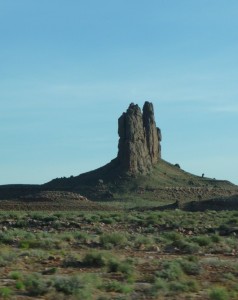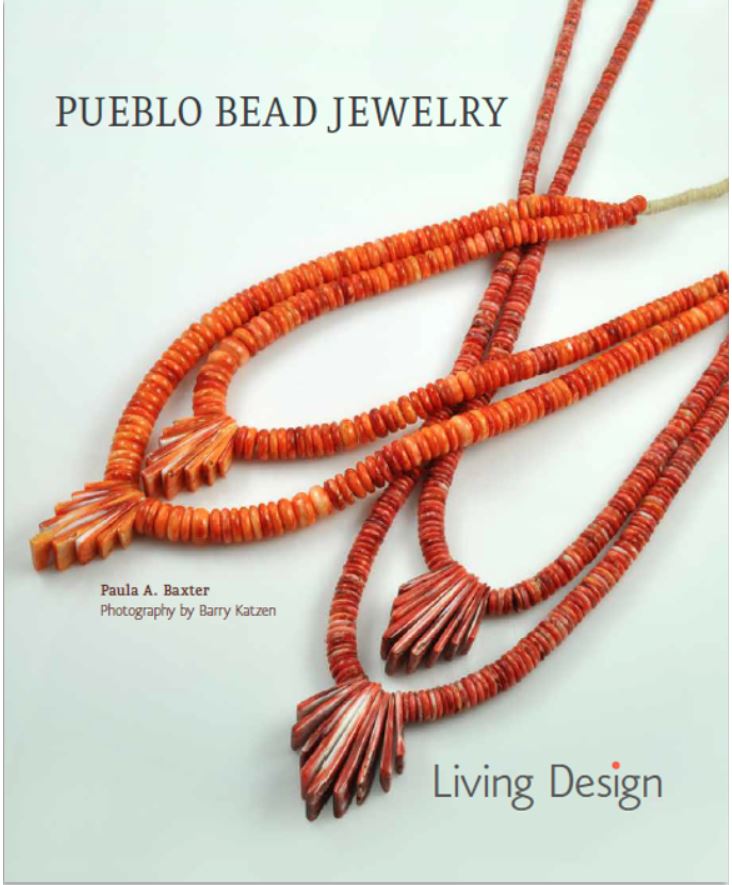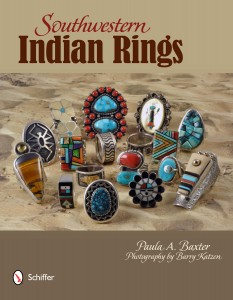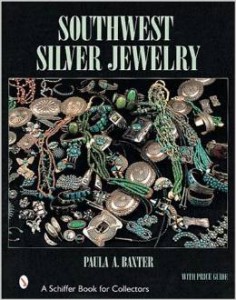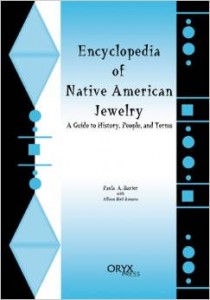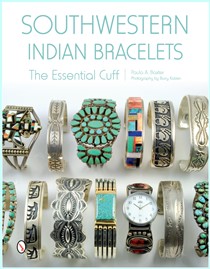We will be taking in the festivities that lead up to the Heard Museum Guild Indian Fair and Market on March 3-4.
Prior to that, I will be signing copies of Southwestern Indian Rings during the Scottsdale Art Walk on March 1. I am dividing my time between two locations:
Old Territorial Indian Arts at 7077 E Main St, from 5 to 7 p.m.
Waddell Trading Company at 7144 East Main Street, from 7 p.m. to 9 p.m.
These two shops are among my favorite destinations in Arizona, and they represent two aspects of the fine Indian art to be found in Scottsdale:
Old Territorial is the oldest running Indian arts shop in the Valley of the Sun. Alston and Deborah Neal offer vintage and contemporary Indian arts that reflect the sturdiness of traditional Native design.
Waddell Trading Company contains dazzling works in rich materials by some of the very best contemporary artists working today. You will see pieces that offer a virtuoso twist on the traditional or avant-garde items that foretell the directions Native style will take.
The creation and launch of the Institute of American Indian Arts (IAIA) in 1962 was an initiative of the Kennedy administration. The first American Indian college devoted to art, it was given a home in Santa Fe—a logical location in terms of the city’s appeal as a marketplace for Indian arts. The famous Indian Market, held there every August, had been started in 1992. IAIA started out with a stellar teaching faculty, including the likes of Lloyd Kiva New and Charles Loloma. One of the most important things that the school fostered was the concept of a shared identity among Native artists; you were connected not just by your tribal ties but your larger communal status as one of America’s first peoples.
The American educational system has been accused of many sins over the years. One sad misrepresentation takes place during the teaching (in eighth grade in New York State and in similar grades in other states) about American’s indigenous peoples. Teachers and textbooks still place a great emphasis on the nineteenth-century history of Indians. The result has been twofold: an admiration for the Native of the past, not the present; and a desire for beautiful artifacts from that past, such as Plains Indian regalia.
Hollywood, and now television, has amplified that misplaced admiration. That’s why everyone has seen Dancing with Wolves over and over, while quieter but more realistic classics like Smoke Signals or Powwow Highway are overlooked. One huge irony I find whenever visiting Indian Country is that there’s always a western playing on local television, and the Indians are usually Navajos dressed up to look like Comanches.
While we have come a long way societally since the first half of the twentieth century, many people still have outdated or unrealistic notions about how American Indians live and think. Part of the problem is that Indians are a genuine minority, representing just under 1% of the American population. Unless one lives close to an Indian reservation, this ethnic group often fails to register in the collective consciousness of our popular culture. Nor do we have television programs, major movies (other than westerns), or celebrities who represent our indigenous peoples. Another large problem has to do with our educational system. American Indians figure in many secondary students’ social studies curricula; usually, this examination looks back to older times and features Indians in clothing and situations that belong to the nineteenth century. No wonder many people, including Europeans, come to Indian Country with rather fantastic expectations. They want buckskin and feathers when they should look for denim and cellphones.
Expect to hear this combination of words more often in the future. A number of the younger and hipper Native artists who dazzle attendees of Indian Market are putting together events that showcase fashion and accessory trends. Their offerings are a natural offshoot of an enduring trend that matches ethnic design creativity with contemporary flair. Frankly, such a movement is quite understandable considering that the Institute of American Indian Arts (IAIA) is celebrating its half-century mark. The under-40 Native artists have had greater exposure to college educations and popular culture that runs 24/7 images. Check out these events when they come to an upcoming Indian arts show. What’s termed avant-garde today will be considered innovative reality tomorrow. All in all, the future’s so bright “I gotta wear shades.”
There are places we haven’t been in the Southwest that call to us from time to time. Rainbow Bridge, located in a remote part of the Navajo Reservation, is one of those places. When I stay in Four Corners I often gaze out north and west and vow to get there some day. Rainbow Bridge is best accessed by Lake Powell, and is a standard stop on the boat rides one can get as a tourist. The eminent anthropologist Clyde Kluckhohn wrote a travel account in 1927, To the Foot of the Rainbow, which was reprinted by the Rio Grande Press. Author Zane Grey, who knew and loved this part of the world, honored the bridge in his western The Rainbow Trail (1915).
For those who’d love a wilderness trail challenge, get a Navajo guide, and plan an expedition: Rainbow Bridge lies half-way between Glen Canyon Dam and Navajo Mountain. The rest of us will get there by boat one day, and Page is a rather nice destination in itself.
Recently, I reread some of art historian Lucy Lippard’s 1999 book, On the Beaten Track: Tourism, Art, and Place. I was reading her descriptions of Santa Fe as a tourist destination, and had to agree with a couple of her criticisms. Lippard claims that the visitor’s experience in Santa Fe tends to be artificial, with more of an emphasis on the city as purveyor of artifacts than genuine cultural experiences. At one point, she speaks of the Santuario de Chimayo as being a destination for both religious Hispanos and cultural tourists — or put another way, “those praying and those prying.”
Santa Fe has always been a bit of a problem for me. I had the good fortune to be taken there as a kid of 8 or 9, and thought it an exotic, foreign city at that time, like someplace in Europe rather than America. Of course I’m talking about 1962 or 1963. By the time I got back there in 1986, I felt like the Santa Fe experience had been reduced to that of purveyor status; the shops stood out so much more than any other cultural monuments or sensations.
I teach at a business college nowadays. My students get intrigued by historical anecdotes and they are fascinated by the continuous theme of America’s reliance on business. American Indians didn’t understand the early European explorers’ and settlers’ motives when they introduced them to a land rich in natural resources. European fur trappers owed their enterprises to Native guides. Eventually, Indians got in the way of nation-building. That doesn’t mean, however, that today’s American Indians don’t exploit business savvy for their own benefit. How else can one explain why some of the Southwest’s hottest Native talent are working with manufacturers and showing wares on QVC’s home shopping channel? Travelers to Indian Country should lay aside outdated notions about Native art production. Young Indians work the Internet as skillfully as my students do.
Perhaps the most marvelous use of Native figures is the rendering of the clowns who appear during Pueblo Indian dances. These creatures play a role in the purpose and community meaning of the dances. The Koshare, represented in black and white stripes, grace modern jewelry, pottery and other craft and art forms. Mudheads, with their ugly ogre faces, are also popular creatures. Non-natives find them appealing and exotic. Certainly, their depiction provides local “color” without providing offense.
Among the most popular visual motifs for Southwestern Indian arts are the sacred spirits of the Pueblo Indians. These beings vary by cultural group. Most people are quickest to recognize Hopi katsinas (as opposed to the old spelling “kachina”). Hopi artists carve these figures from cottonwood, and have a wide range of beings that vary from powerful deities to sacred clowns. Zuni artists have contributed the sun face symbol for the sun god, and the popular images of the Rainbow and Knifewing spirits. These figures have been used for designs on jewelry, thus saving more significant spirits, like the Shalako, from depiction.
Fortunately, the Pueblo peoples are old veterans at this sort of compromise. The Rio Grande Pueblo smiths would make representations of their sun god in the form of the dragonfly, and wrought this symbol to resemble the Christian cross. To the padres who oversaw them during colonial times, they looked like the very epitome of a good Catholic in their cross necklaces.
